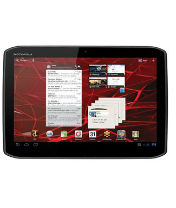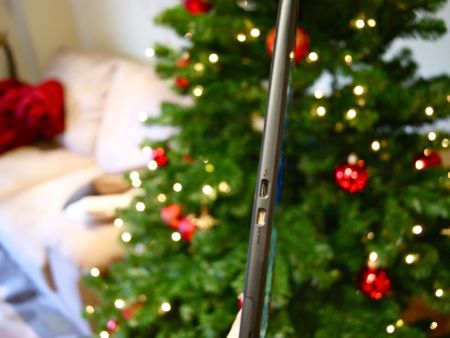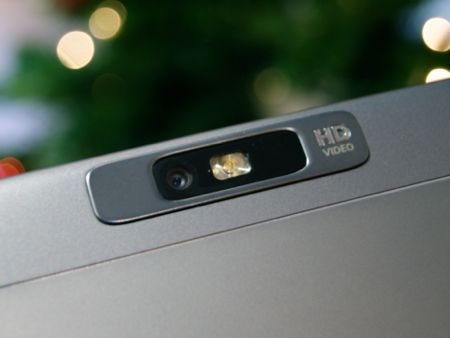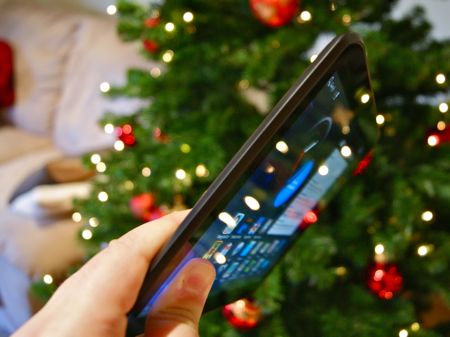
The Motorola Xoom was the first tablet to introduce the Honeycomb OS to the world. It didn't do very well, which could be seen as something of an understatement, but Motorola needn't be too upset given that no Android tablets seem to be doing very well.
However, no manufacturer is going to be happy about doing only slightly worse than everyone else. The Xoom was big, heavy, and not particularly great to look at. Honeycomb in its native form is also pretty dull.
Samsung was perhaps wise to add some of its TouchWiz user interface to bring a bit of life, and colour, to the Galaxy Tab.

Instead of releasing just one new tablet, it's released two. The 10.1-inch Xoom 2 reviewed here, and a smaller-screened version, the Xoom 2 Media Edition, designed for use in portrait mode rather like a Kindle. I'll be reviewing that on its own soon.
The Xoom 2 is thinner than the Xoom (it's 8.8mm) and has nicer edges, although it's more angular than Samsung's tablet, which attracted all the wrong attention from Apple. On the back you'll find a rubberised coating along the edges that allows you to hold it firmly in your hand.
What you won't actually see are some other clever features. The first is a special 'splash guard' coating that repels liquids, which protects the outer casing and the internal components. Already used on the Motorola RAZR, it doesn't mean the Xoom 2 is waterproof, but it should cope with accidental spills.

The second is the detection of a finger or thumb at the screen edge that's there to help you grip the tablet, rather than control it.
As long as you don't move your thumb, the Xoom 2 will ignore its presence and allow you to scroll, select, and zoom with your other hand – including multi-touch actions. Considering the Xoom 2 still is still quite hefty (600g), it could be the most useful feature of all.
There's another feature that isn't exactly special, but worthy of a mention. The Xoom 2 is one of the few tablets that can be charged via the standard micro-USB socket, instead of a proprietary socket that means carrying around another power supply. This port is all you'll find on the Xoom 2 besides an output to connect to an HDTV.
That means no full-sized USB socket and no memory card slot, although our review sample still had a cover where you'd expect a memory card or SIM card to go.
There are no plans for a 3G-enabled version of the Xoom 2, but a 4G model has been announced in the USA, so there could potentially be one announced in the new year. That's if the Xoom 2 sells well enough, or enough people demand one with connectivity on the road.

For now, the Xoom 2 relies solely on wi-fi and 16GB of internal storage space.
Motorola believes that most multimedia will be accessed 'via the cloud' in the future, making physical storage almost obsolete. To prove the point, Motorola isn't just talking about using other services, like Spotify or Google's new movie service, but also providing its own solution, called MotoCast.
Based on ZumoCast, a company Motorola bought, MotoCast allows you to watch movies, view photos, and listen to music from any PC or Mac that has a tiny application installed on it, along with a constant connection to the internet.
You can also access media via DLNA-compliant devices, but MotoCast is incredibly simple. The only downside is that you'll need to keep your PC or Mac powered up all of the time.
You can use MotoCast to access documents, and you can download all media if you're going somewhere with no wi-fi, such as a plane. The Xoom 2 is also loaded with a lot of apps that seem more suited to business users than consumers, which seems rather odd.
Motorola is clearly trying to cover all the bases by providing a number of optional accessories. There's a wireless keyboard and mouse, a docking station, and a Smart Controller, which is useful for controlling the tablet when it's connected to a TV.
There's also an optional pen that you can use to produce drawings and annotations on the screen, with pre-loaded apps including Evernote and Skitch.
Even without the pen you can hit an icon in the bottom right-hand corner of the screen to bring up a notepad for notes or sketches. The pen is only compatible with the Xoom 2 - not the Media Edition version.

All in all, the Xoom 2 does a pretty good job of doing everything you could probably think of. It has a 1.2GHz dual-core processor and a screen that's brighter than the original's, although the over zealous auto-brightness setting will probably mean you won't always notice.
What you'll always notice are the fingerprints that the Xoom 2 picks up like a magnet.
Like most tablets, the Xoom 2 also has a (5-megapixel) camera on the back that can take photos and record HD video. And as with all of the camera-equipped tablets, you'll look like an idiot if you use it for either.
The camera is useful for emergencies, perhaps, but even though the photos are pretty good and the flash is respectable it's a bit of hardware you can happily live without.

More useful might be the front-facing camera, which you can use with a number of apps for video calling, including Skype and Google Talk.
Bearing in mind that a lot of tablets are used by people sitting in front of the TV to see what friends are saying about X Factor or to look up what film an actor was in, there's something else the Xoom 2 can do that's rather nifty. At the top of the tablet is an infrared port, and an app called Dijit can enable the port to control your TV, Blu-ray player, and a range of set-top boxes.
So what's not to like about the Xoom 2? Well, its big problem is the same problem as the original: the operating system.
Without any customisation, it lacks flair and looks dull. HTC and Samsung have done some good things with it, but there's still a lot to do. Android 4 could be the answer, and Motorola will be updating the Xoom 2 to run Ice Cream Sandwich in early 2012.
Do you buy now and wait, or simply wait?
The answer to that all depends on how much you want a tablet, and whether it will be an iPad or Android (let's ignore the PlayBook for now).
The one advantage of Android is that if you own an Android smartphone, apps you may have already purchased could run on the Xoom 2 with a different look for the bigger screen. With the iPad, you'll often need to buy the iPad version at extra cost.

With its infrared port, its splash protection, and its unique feature that allows you to have an undetected thumb on the screen, the Xoom 2 is definitely one of the leading models on sale.
It's also assured an operating system upgrade that will improve things further, so the only model that may dissuade you from buying one is the smaller 8.9-inch Media Edition model.
Motorola Xoom 2

